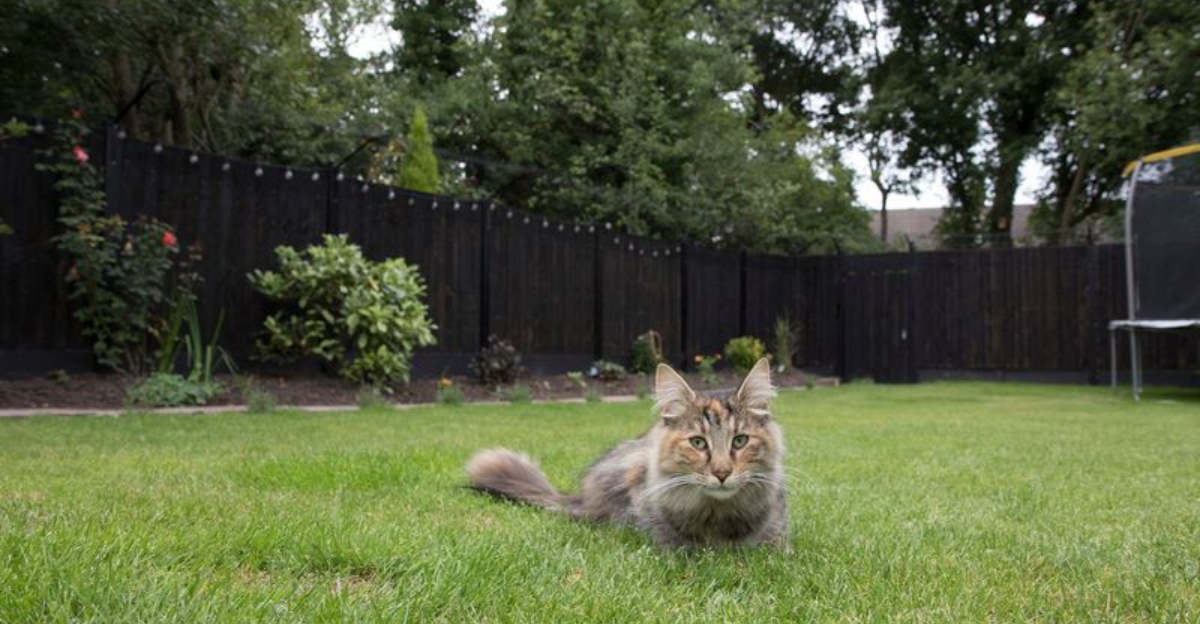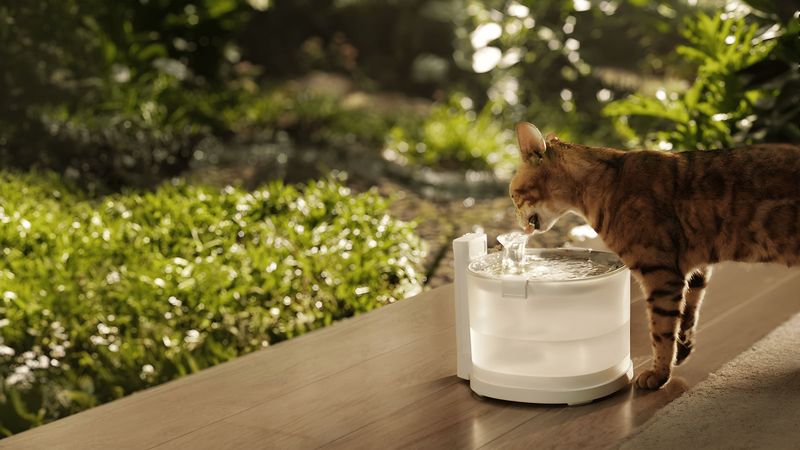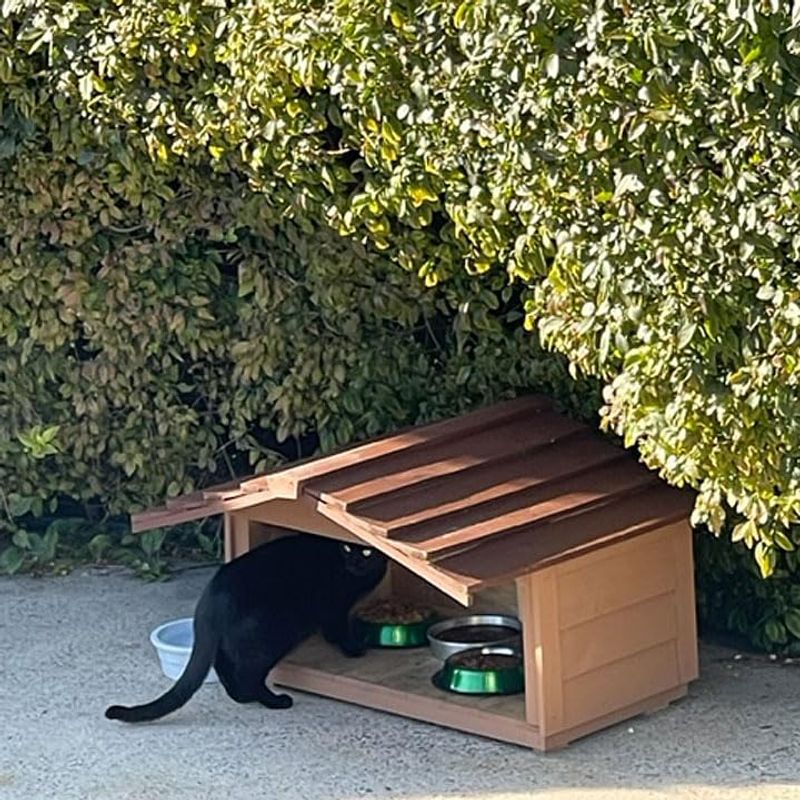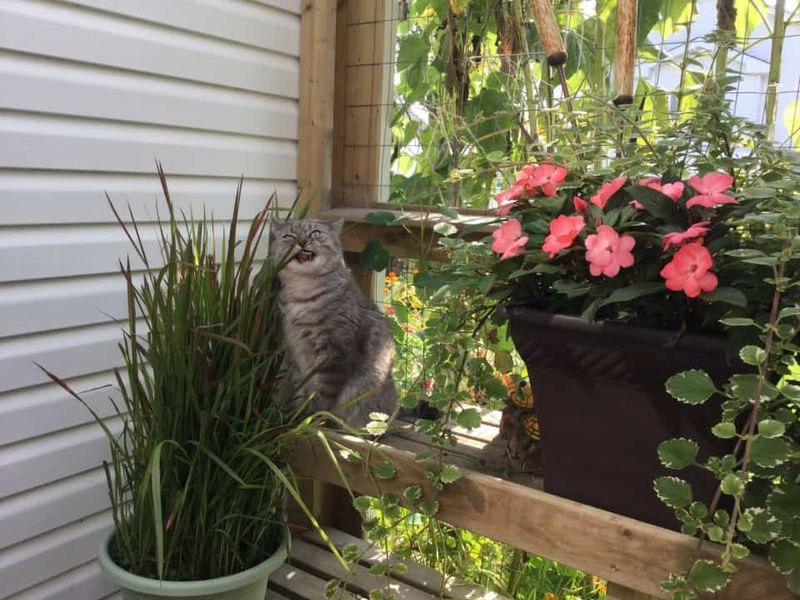📖 Table of Content:
Cats, both domestic and feral, are curious creatures with strong instincts for comfort, safety, and routine. If you’ve noticed that neighborhood cats are steering clear of your yard while flocking to others, it may be due to subtle cues you’re unaware of. From the layout of your outdoor space to the scents and surfaces within it, many small details can significantly influence whether a cat feels welcome or wary.
While some people actively try to deter cats, others find their presence relaxing, helpful for pest control, or simply enjoyable. Cats bring a quiet charm and natural rhythm to a garden, lounging in sunbeams, stalking imaginary prey, or just watching the world go by. But if your yard lacks certain key features, even the most adventurous feline might give it a pass. That doesn’t mean you need to build a kitty amusement park. By making a few thoughtful adjustments, you can create an inviting haven that appeals to a cat’s natural instincts without compromising your outdoor aesthetics.
This article explores 10 straightforward and effective changes you can make to increase your yard’s feline appeal. Each strategy is grounded in what we know about cat behavior and their environmental preferences. Whether you’re hoping to care for local strays or simply enjoy more feline visitors, these practical steps can help turn your yard into a cat-friendly sanctuary. Read on to learn how to make your space more irresistible to cats—naturally and quickly.
1. Add Shelter or Hiding Spots
Safe spaces are non-negotiable for cats. Without them, they won’t linger, let alone settle in. Tucking small shelters behind shrubs or against walls gives them a protected, low-visibility area to escape weather or perceived threats. These can be as simple as a covered tote with a towel inside or as elaborate as a wooden cat house. Shrubs, dense bushes, and tall grasses can serve the same purpose in a pinch. Strategically placed hiding spots allow cats to observe their environment without being fully exposed, which helps them feel secure. By making shelter accessible but discreet, you provide one of the key things cats seek in any territory.
2. Install a Water Source
Hydration stations are often overlooked but incredibly important. A shallow, clean water dish can be enough to attract cats passing through. Better yet, moving water—like a small solar-powered fountain—offers both function and fun. Cats are drawn to the sound and shimmer of flowing water, which feels fresher and safer to them than stagnant sources. Place the water feature in a shaded, quiet spot to encourage use. Regular cleaning is crucial to prevent bacteria or insect buildup, which might otherwise discourage them. This simple gesture signals to cats that your yard is a resource-rich zone worth revisiting.
3. Use Catnip or Catmint Plants
Nothing excites a cat like the scent of catnip. Whether crushed or growing wild, the compound nepetalactone in catnip triggers an almost euphoric response in many felines. By planting catnip or its milder cousin, catmint, you turn your yard into a botanical playground. These plants are hardy and thrive in most climates, making them low-maintenance and long-lasting. Cats may roll, rub, chew, or simply lounge near these plants once they find them. It’s a natural and chemical-free way to make your yard more alluring. Even the most aloof neighborhood cat might swing by just for a whiff.
4. Create Vertical Spaces
Cats adore being above ground level. Providing perches, shelves, or even large stones gives them the vantage points they crave. A yard that offers a vertical experience is much more stimulating and enjoyable for felines than a flat, empty lawn. Think in levels—raised platforms under trees, fence-top walkways, or stacked crates can work wonders. These elements let cats survey their surroundings and feel in control. It’s not just about height but also about enriching their territory with diverse options for exploration. By adding vertical interest, your yard becomes more than a pass-through—it becomes a place to linger.
5. Add a Feeding Station
Offering food turns occasional visitors into regulars. A feeding station should be sheltered, discreet, and consistently maintained to establish trust. Use a sturdy bowl with dry kibble and avoid strong-smelling or perishable items that might attract pests. Try placing the station where it’s visible from a distance but has nearby cover, so cats can approach cautiously. Don’t move it around frequently; cats thrive on routine and predictability. After a few days, they’ll start to associate your yard with nourishment and safety. In time, you may even find multiple cats visiting at once, forming a kind of informal colony.
6. Avoid Strong Scents or Repellents
Certain aromas send cats running. If your yard includes citrus peels, essential oils like lavender or peppermint, or commercial repellents, cats are likely steering clear. Many well-meaning gardeners use these substances without realizing they’re unwelcome to feline noses. Removing or relocating these items can make a noticeable difference in how cats respond to your space. Focus instead on neutral or earthy scents—nothing too overpowering or chemically. Sometimes just discontinuing certain products is enough to see a change. A scent-neutral zone is often more attractive than one filled with human-preferred fragrances.
7. Include Soft Ground Surfaces
Hard, sharp, or unstable ground feels uninviting to sensitive paws. To encourage cats to rest or roll around, add soft textures such as grass, moss, or laid-out fabric. Even a sandy patch or soil bed can be more appealing than gravel or concrete. These areas can double as lounging or litter spots for strays, giving them even more reason to hang around. If planting isn’t an option, consider outdoor rugs or old towels laid in shady corners. The key is comfort; cats will naturally seek out cozy surfaces to relax. Once they find a soft spot, they’re far more likely to stay a while.
8. Reduce Loud Noises
Sound plays a powerful role in feline behavior. A yard with unpredictable noises—wind chimes, barking dogs, or sprinklers—can feel hostile to a cautious cat. Eliminating or minimizing these disturbances can transform your yard into a haven. Opt for silent or soft-sounding décor and avoid activating motion-based devices when not needed. If neighbors contribute to the noise, consider creating sound buffers with hedges or fencing. Calm environments are magnets for cats looking to nap, sunbathe, or just chill. By prioritizing quiet, you create a zone that invites calm exploration.
9. Use Cat-Friendly Toys or Objects
Playfulness is part of a cat’s daily life. Placing a few simple toys—like feathered sticks, lightweight balls, or rustling leaves—in your yard can pique their curiosity. You don’t need anything fancy; even twigs and pinecones can serve as natural entertainment. Rotate the items occasionally to keep things fresh and interesting. Interactive or sensory objects engage both feral and domestic cats, helping them feel at ease. These touches make your yard feel alive and responsive to their needs. Over time, cats may come not just for safety or food, but for fun.
10. Provide Warmth
Warmth is a comfort cats never ignore. Even in mild climates, a sunny spot or cozy corner can make a big difference. Use materials that hold heat, like concrete pavers or thermal mats, placed in sun-exposed areas. Old blankets inside shelters also offer added comfort. Cats instinctively seek warmth for rest, especially in early morning or late evening. Position these warm areas where cats feel secure—near walls or under shrubs, for instance. By offering heat, you give them a reason to stay longer—and return often.










